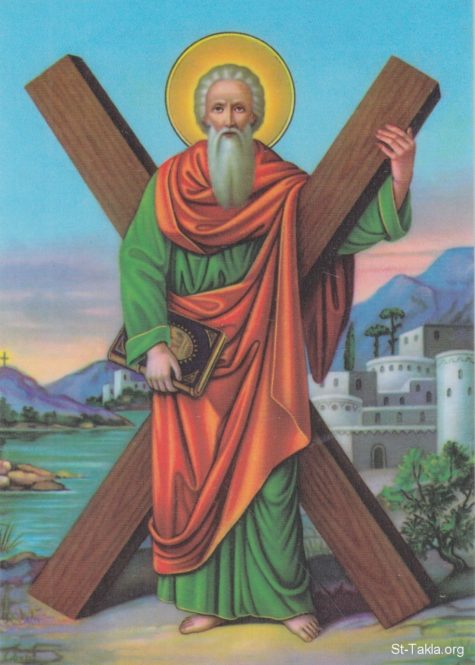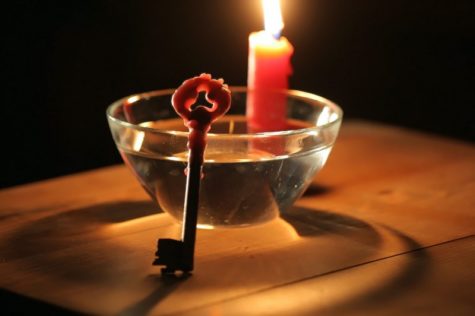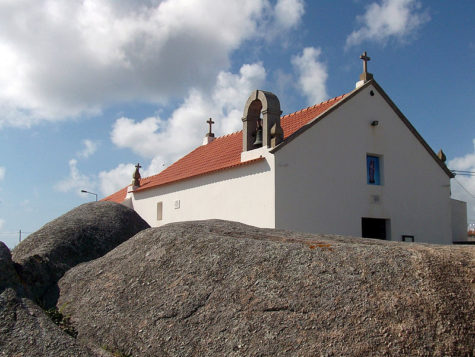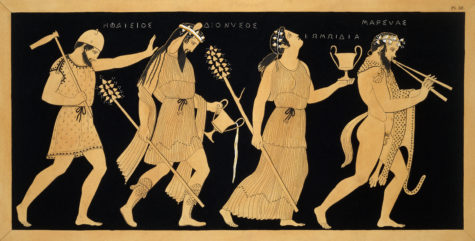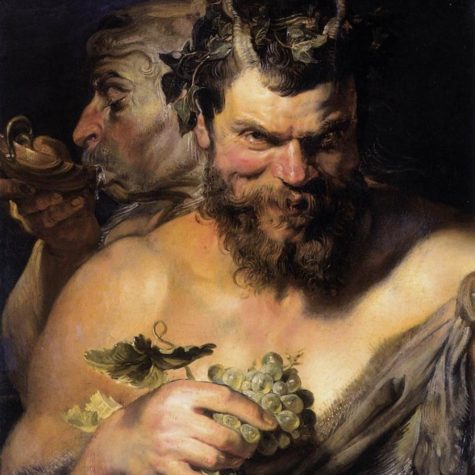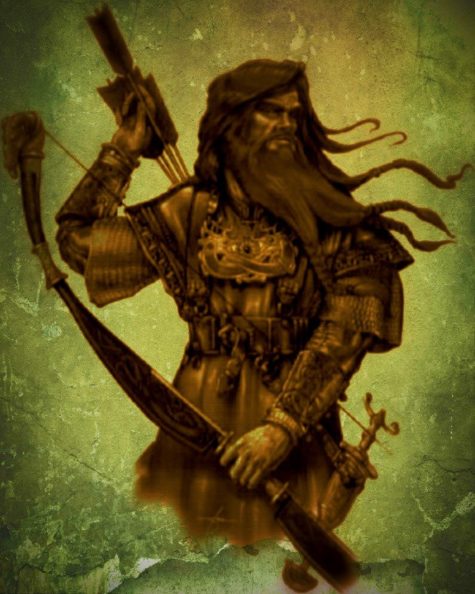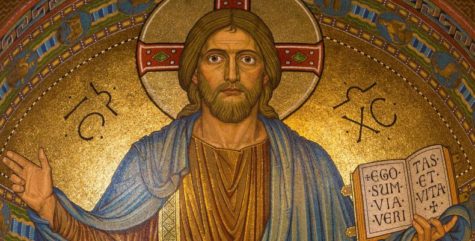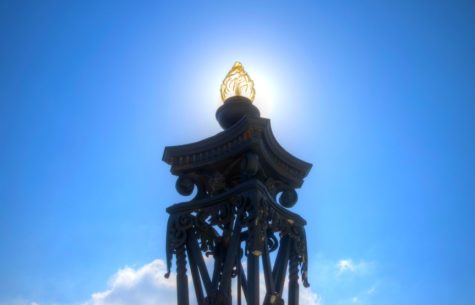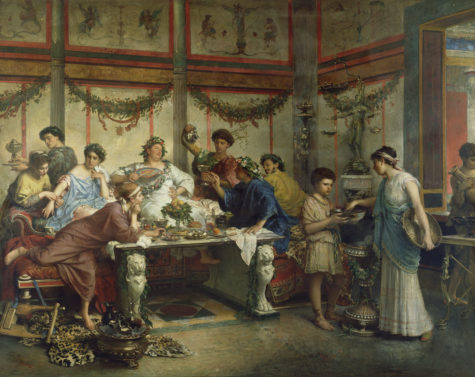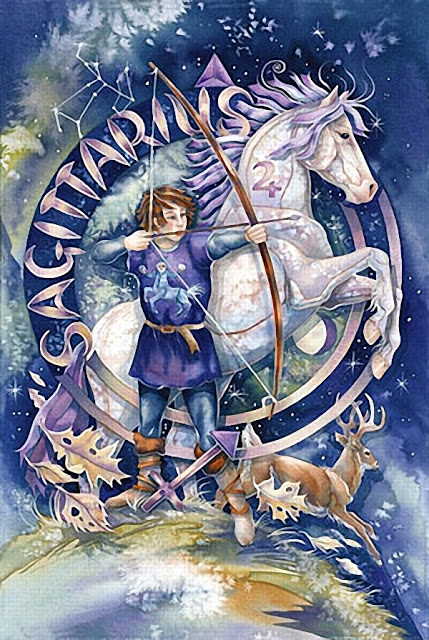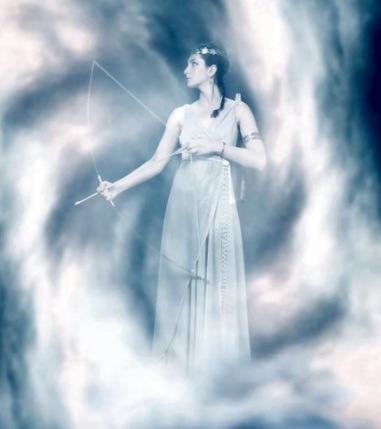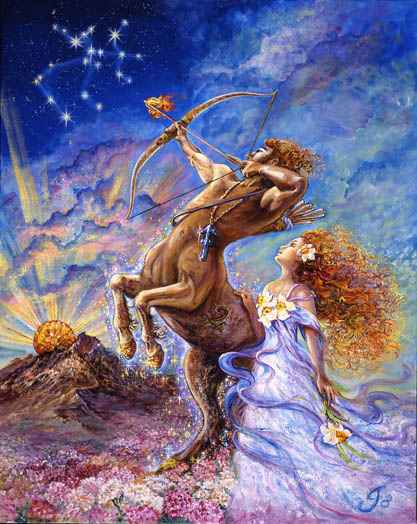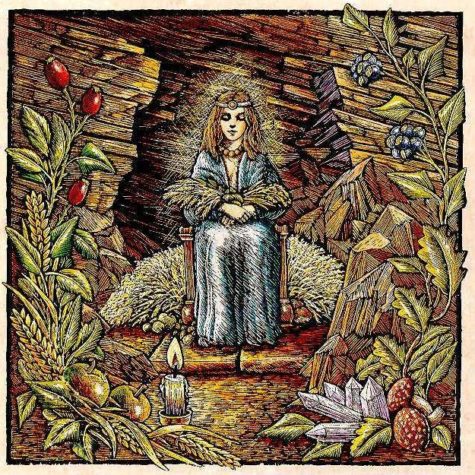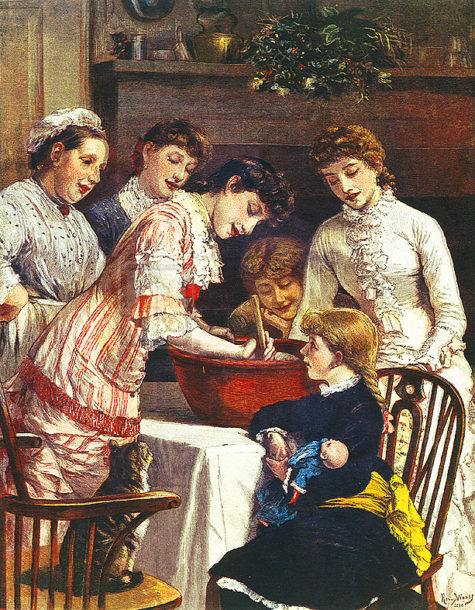Monthly Archives: November 2016
Saint Andrew’s Day is the feast day of Saint Andrew. It is celebrated on 30 November. The celebration of Saint Andrew as a national festival is thought to originate from the reign of Malcolm III (1034–1093). It was thought that ritual slaughter of animals associated with Samhain was moved to this date, so as to assure enough animals were kept alive for winter. But it is only in more recent times that 30 November has been given national holiday status.
Other names for this day include:
- Saunt Andra’s Day – Scottish
- Là Naomh Anndrais – Gaelic
- Andreasnacht – Germany
- Andreasgebet – Austria
- Andrzejki – Poland
In 2006, the Scottish Parliament passed the St. Andrew’s Day Bank Holiday (Scotland) Act 2007, which designated the Day as an official bank holiday. If 30 November falls on a weekend, the next Monday is a bank holiday instead. Although it is a bank holiday, banks are not required to close and employers are not required to give their employees the day off as a holiday.
The University of St Andrews traditionally gives the day for all the students as a free holiday, but this is not a binding rule.
The Saltire
Saint Andrew’s Day is an official flag day in Scotland. The Scottish Government’s flag-flying regulations state that the Flag of Scotland (the Saltire or Saint Andrew’s Cross) shall fly on all its buildings with a flagpole. Prior to 2002, the Scottish Government followed the UK Government’s flag days and would only fly the Union Flag on Saint Andrew’s Day. The regulations were updated to state that the Union Flag would be removed and replaced by the Saltire on buildings with only one flagpole.
The flying of the Union Flag from Edinburgh Castle on all days, including Saint Andrew’s Day causes anger among some Scottish National Party politicians who have argued that the Saltire should fly on 30 November instead. However, the Union Flag is flown by the British Army at the Castle as it still is an official British Army flag flying station.
Celebrations Around The World
In Scotland, and many countries with Scottish connections, Saint Andrew’s Day is marked with a celebration of Scottish culture with traditional Scottish food, music and dance. In Scotland the day is also seen as the start of a season of Scottish winter festivals encompassing Saint Andrew’s Day, Hogmanay and Burns Night. There are week-long celebrations in the town of St Andrews and in some other Scottish cities.
Saint Andrew’s Day is celebrated as the national day of Independence in Barbados. As the patron saint, Saint Andrew is celebrated in a number of Barbadian symbols including the cross formation of the Barbadian Coat of Arms, and the country’s national honors system which styles persons as Knights or Dames of St. Andrew.
Folklore and Pre-Christian Traditions
There are a few pre-Christian Romanian traditions connected to Saint Andrew’s Day, some of them having their origin in the Roman celebrations of Saturn. The Dacian New Year took place from 14 November until 7 December; this was considered the interval when time began its course.
One of the elements that came from the Roman and Thracian celebrations concerned wolves. During this night, wolves are allowed to eat all the animals they want. It is said that they can speak, too, but anyone that hears them will soon die.
Early on Saint Andrew’s day, the mothers go into the garden and gather tree branches, especially from apple, pear and cherry trees, and also rosebush branches. They make a bunch of branches for each family member. The one whose bunch blooms by New Year’s Day will be lucky and healthy the next year.
The best known tradition connected to this night concerns matrimony and premonitory dreams. Single girls must put under their pillow a branch of sweet basil. If someone takes the plants in their dreams, that means the girl will marry soon. They can also plant wheat in a dish and water it until New Year’s Day. The nicer the wheat looks that day, the better the year to come.[
In parts of Ukraine, Germany, Austria, Slovakia, Poland, Russia and Romania, a superstitious belief exists that the night before Saint Andrew’s Day is especially suitable for magic that reveals a young woman’s future husband or that binds a future husband to her. The day was believed to be the start of the most popular time for vampire activity, which would last until Saint George’s Eve (22 April).
In Poland, the holiday Andrzejki is celebrated on the night of the 29th through 30 November. Traditionally, the holiday was only observed by young single girls, though today both young men and women join the party to see their futures. The main ceremony involved pouring hot wax from a candle through the hole in a key into cold water.
In Romania, it is customary for young women to put 41 grains of wheat beneath their pillow before they go to sleep, and if they dream that someone is coming to steal their grains that means that they are going to get married next year. Also in some other parts of the country the young women light a candle from the Easter and bring it, at midnight, to a fountain. They ask Saint Andrew to let them glimpse their future husband. Saint Andrew is invoked to ward off wolves, who are thought to be able to eat any animal they want on this night, and to speak to humans. A human hearing a wolf speak to him will die.
Saint Andrew and Fishing
In Póvoa de Varzim, an ancient fishing town in Portugal there’s Cape Santo André (Portuguese for Saint Andrew), a place that shows evidence of Romanization and of probable earlier importance, with hints of stone age paintings. In local mythology, Saint Andrew fished the souls of those drowned at sea and helped in fisheries and marriages.
Near the cape there are small pits in a rock, a mystery stone, that the people believe these are footprints of Saint Andrew.
Saint Andrew Chapel is of probable medieval origin, referenced in 1546 and in earlier documents. It is the burial site of drowned fishermen found at the cape. Fishermen also asked intervention from the saint for better fisheries. Single girls wanting to get married threw a little stone to the roof of the chapel. Because of pagan syncretism, it is also associated with white magic up to the present day.
It was common to see groups of fishermen, holding lights in their hands, making a pilgrimage to the Cape’s chapel through the beach in Saint Andrew’s Eve. They believed Saint Andrew fished, from the depths, the souls of the drowned. Those who did not visit Santo André in life would have to make the pilgrimage as a corpse.
Sources: Wikipedia
The Dionysia was originally a rural festival in Eleutherae, Attica, probably celebrating the cultivation of vines. It was probably a very ancient festival, perhaps not originally associated with Dionysus. This “rural Dionysia” was held during the winter, in the month of Poseideon (the month straddling the winter solstice, Dec – Jan).
The central event was the procession (pompe), in which a symbol of the phallos, sign of fertility, was carried through the dancing and singing procession. Young girls carried baskets, others carried long loaves of bread and other offerings, also carried in the procession were jars of water and wine. The pompe ended with a sacrifice consisting of baked bread or a gruel of cereal.
After the pompe procession was completed, there were contests of dancing and singing, and choruses (led by a choregos) would perform dithyrambs. Some festivals may have included dramatic performances, possibly of the tragedies and comedies that had been produced at the City Dionysia the previous year. This was more common in the larger towns, such as Piraeus and Eleusis. Generally, it was a joyful festival, shared by all, even the slaves.
Because the various towns in Attica held their festivals on different days, it was possible for spectators to visit more than one festival per season. It was also an opportunity for Athenian citizens to travel outside the city if they did not have the opportunity to do so during the rest of the year. This also allowed travelling companies of actors to perform in more than one town during the period of the festival.
The City Dionysia. also known as the Great Dionysia, was the urban part of the festival, possibly established in the 6th century BC. This festival was held probably from the 10th to the 16th of the month Elaphebolion (the lunar month straddling the vernal equinox, Mar – Apr in the solar calendar), three months after the rural Dionysia, probably to celebrate the end of winter and the harvesting of the year’s crops.
Ways to celebrate in modern times:
Sing, dance, play games, attend or participate in a parade or comedic theater of some sorts. Create phallic-shaped cakes for consumption and sacrifice. Read The Archanians by Aristophanies, which provides a glimpse of the festival. Display images and symbols of the God. Recite Orphic Hymns, Homeric Hymns, (all to Dionysos), or even hymns of your own creation.
I celebrate the Rural Dionysia following immediately the Heliogenna lasting through January 1. I pack baskets with gifts of nuts, wine, silly games and gifts, and DVD’s of comedies. Then I deliver those baskets, not more than one a day or evening, to friends and family. I spend the evening with the basket recipient and we eat the snacks, watch the DVDs, and drink the wine.
We also play the silly games and laugh. You don’t have to give the DVDs, you could just bring over a bottle of wine and a DVD from your collection or a netflix. That’s how I celebrate it since that is pretty close (in spirit) to what the Rural Dionysia was all about. – Cara Schulz
The Ancient Hymns
- The Fumigation from Storax.
Bacchus I call, loud-sounding and divine, fanatic God, a two-fold shape is thine: Thy various names and attributes I sing, O, first-born, thrice begotten, Bacchic king: Rural, ineffable, two-form’d, obscure, two-horn’d, with ivy crown’d, euion, pure. Bull-fac’d, and martial, bearer of the vine, endu’d with counsel prudent and divine: Triennial, whom the leaves of vines adorn, of Jove and Proserpine, occultly born. Immortal dæmon, hear my suppliant voice, give me in blameless plenty to rejoice; And listen gracious to my mystic pray’r, surrounded with thy choir of nurses fair.
- A Hymn
Come, blessed Dionysius, various nam’d, bull-fac’d, begot from Thunder, Bacchus fam’d. Bassarian God, of universal might, whom swords, and blood, and sacred rage delight: In heav’n rejoicing, mad, loud-sounding God, furious inspirer, bearer of the rod: By Gods rever’d, who dwell’st with human kind, propitious come, with much-rejoicing mind.
- The Fumigation from Manna.
Liknitan Bacchus, bearer of the vine, thee I invoke to bless these rites divine: Florid and gay, of nymphs the blossom bright, and of fair Venus, Goddess of delight, ‘Tis thine mad footsteps with mad nymphs to beat, dancing thro’ groves with lightly leaping feet: From Jove’s high counsels nurst by Proserpine, and born the dread of all the pow’rs divine: Come, blessed pow’r, regard thy suppliant’s voice, propitious come, and in these rites rejoice.
- The Fumigation from Aromatics.
Bacchus Pericionius, hear my pray’r, who mad’st the house of Cadmus once thy care, With matchless force, his pillars twining round, (when burning thunders shook the solid ground, In flaming, founding torrents borne along), propt by thy grasp indissolubly strong. Come mighty Bacchus to these rites inclin’d, and bless thy suppliants with rejoicing mind.
- To Dionysus
Of ivy-tressed uproarious Dionysus I begin to sing, the splendid son of Zeus and renowned Semele. Him did the fair-tressed nymphs foster, receiving him from the king and father in their bosoms, and needfully they nurtured him in the glens of Nysê. By his father’s will he waxed strong in the fragrant cavern, being numbered among the Immortals. Anon when the Goddesses had bred him up to be the god of many a hymn, then went he wandering in the woodland glades, draped with ivy and laurel, and the nymphs followed with him where he led, and loud rang the wild woodland. Hail to thee, then, Dionysus of the clustered vine, and grant to us to come gladly again to the season of vintaging, yea, and afterwards for many a year to come.
Sources: Wikipedia, Hellenionstemenos, and Project Gutenberg
The Feast of Ullr was traditionally a hunting festival. Ullr, god of hunting, and the bow was honoured and a feast was shared by the tribe of the spoils of the hunt. I remember hearing somewhere about Skathi also being honoured on this day but I can’t recall where… Anyway, in addition to being the goddess of skiing, she also governs hunting and bows.
The tribe (or family) on this day would take a portion of the meat from the hunt and have a large and joyous feast before the winter sets in hard. Today, most of us do not hunt, we get our meals from the super market, and if we are lucky, we grow a small amount of herbs and vegetables for eating. But we always get our meat from the grocery store. So celebrating a feast of the hunt is not as powerful a gesture in out modern times.
Many Asatruar in the USA use the national Thanksgiving holiday to honor our Gods and Goddesses of the hunt (it is deer hunting season in many parts of the country). We thank them for a successful hunting season with a blot and also bless/honor those who hunt to support the family. Weapons are dedicated on this day to Ullr. Some also take advantage of the family-oriented secular holiday to honor their personal ancestors.
One way to do this is to set an extra place at the table and leave it empty so that any ancestor who wishes may join us for the feast. This is a great time for telling tales handed down through the family. Still other Asatruar refer to this holiday as “Weyland Smith’s Day” and use it to honor that great Germanic craftsman as well as those artists and artisans around us.
On this day also, you may want to take time out with family and friends to shoot bows, throw some axes, play some Kubb and always playing a little Glima (Scandinavian Folk Wrestling of which Ullr is still remembered as the god of).
Collected from various sources including Jake Jackson and Pagan Space
We do not bring God into time; He is the Creator of time. In the mystery of the Incarnation, the Eternal Word through whom the universe was created entered into time to re-create it from within!
The Solemnity of Our Lord Jesus Christ, King of the Universe, commonly referred to as the Feast of Christ the King, is a relatively recent addition to the Western liturgical calendar, having been instituted in 1925 by Pope Pius XI for the Roman Catholic Church. In 1970 its Roman Catholic observance was moved to the final Sunday of Ordinary Time. Therefore, the earliest date on which it can occur is 20 November and the latest is 26 November. Traditional Catholics observe it on its original date, the last Sunday of October.
- The liturgical vestments for the day are colored white or gold, in keeping with other joyous feasts honoring Christ.
In the Evangelical-Lutheran Church of Sweden, this day is referred to as the Sunday of Doom, previously highlighting the final judgement, though after 1983 the theme of the day was amended to the Return of Christ. In the Church in Wales, the 4 Sundays before Advent are called the “Sundays of the Kingdom” and Christ the King is observed as a season and not a single festal day.
- Some Anglicans refer to this Sunday as “Stir-up Sunday.”
First, the Anglican collect for the day begins with the words, “Stir up, we beseech thee, O Lord, the wills of thy faithful people…” Second, some old pudding recipes require the pudding to sit for several weeks before being cooked. This Sunday became a day that people would traditionally begin preparing pudding for Christians, which includes “stirring it up.”
These two things came together in people’s minds, as Wikipedia explains: “Supposedly, cooks, wives and their servants would go to church, hear the words ‘Stir up, we beseech thee, O Lord…’, and be reminded, by association of ideas, that it was about time to start stirring up the puddings for Christmas.”
Celebrations include the following:
- Many Christian churches have masses that celebrate Christ.
- Some people take the time out of their day to reread Pope Pius XI’s encyclical Quas primas
- Participation in many of the Christ the King processions that occur on this day
- Some people recite the Act of Dedication of the Human Race to Jesus Christ King.
Many people celebrate Jesus Christ with a celebration that can feature food items such as crown cupcakes (a representation of Christ as king); cakes topped with icing thorns or King Cakes baked in the shape of a crown.
Act of Dedication of the Human Race to Jesus Christ King
Most sweet Jesus,
Redeemer of the human race,
look down upon us humbly prostrate before You.
We are Yours, and Yours we wish to be;
but to be more surely united with You,
behold each one of us freely consecrates himself today
to Your Most Sacred Heart.
Many indeed have never known You;
many, too, despising Your precepts, have rejected You.
Have mercy on them all, most merciful Jesus,
and draw them to your Sacred Heart.
Be King, O Lord,
not only of the faithful who have never forsaken You,
but also of the prodigal children who have abandoned You;
grant that they may quickly return to their Father’s
house,
lest they die of wretchedness and hunger.
Be King of those who are deceived by erroneous opinions,
or whom discord keeps aloof,
and call them back to the harbor of truth
and the unity of faith,
so that soon there may be but one flock and one Shepherd.
Grant, O Lord, to Your Church assurance of freedom
and immunity from harm;
give tranquility of order to all nations;
make the earth resound from pole to pole with one cry:
Praise to the Divine Heart that wrought our salvation;
to it be glory and honoUr for ever.
Amen.
From: Wikipedia and other sources
Every year in late November Baha’is around the world honor unity on the Day of the Covenant. It occurs yearly on the 4th day of Speech (Qawl) which coincides with either Nov 25 or 26 depending on when Naw Ruz falls on that year. The Day of the Covenant 2017 will begin in the evening of Friday, Nov 24 and ends in the evening of Saturday, Nov 25.
This special Baha’i Holy Day recognizes and celebrates the appointment of Abdu’l-Baha as the Center of Baha’u’llah’s Covenant, that unbroken, unified line of guidance which safeguards the Baha’i Faith from division and disunity.
So Baha’is celebrate the unity of their Faith—and the essential unity of all Faiths—on the Day of the Covenant. They also recognize, on this special day, the wider covenant that exists between God and humanity, which expresses itself in the singular purpose, common principles, and prophetic connections that link every Faith. This eternal covenant between God and humanity calls on each human being to recognize and accept all of the founders of the world’s great Faiths, acknowledging the system of divine education Baha’is call progressive revelation.
Baha’is see the unity of religion as an organic, unbroken chain of God’s messengers, who all taught the same essential Faith. This great Covenant – God’s promise never to leave His creation bereft of guidance – has held true throughout every time and civilization:
Abraham, on Him be peace, made a covenant concerning Moses and gave the glad-tidings of His coming. Moses made a covenant concerning the promised Christ, and announced the good news of His advent to the world. Christ made a covenant concerning the Paraclete and gave the tidings of His coming. The Prophet Muhammad made a covenant concerning the Bab, and the Bab was the One promised by Muhammad, for Muhammad gave the tidings of His coming. The Bab made a Covenant concerning the Blessed Beauty, Baha’u’llah, and gave the glad-tidings of His coming, for the Blessed Beauty was the One promised by the Bab. Baha’u’llah made a covenant concerning a Promised One Who will become manifest after one thousand or thousands of years. – Abdu’l-Baha, Baha’i World Faith
Baha’u’llah’s Covenant continues that unbroken chain of divine guidance and love.
Because of that Covenant, the Baha’i Faith has survived for more than a century and a half without sects, schism or denominations, its unity firmly guarded and established. That accomplishment, unique in religious history, means that Baha’is all over the world, from every race and culture and class and former faith and nation, believe in and adhere to a single unified Faith.
The Baha’i teachings say that everyone on Earth will gradually awaken to Baha’u’llah’s prophetic vision of our planet as a single homeland and humanity as one family. Baha’u’llah’s Covenant, with its emphasis on unity and oneness, helps us heal past differences and divisions, while building a new, mutual relationship between us and our Creator.
Baha’is believe that this Covenant will help humanity build a unified global society—please join us today as we recognize and celebrate the healing power of unity.
Source: Baha’i Teachings
Brumalia is an ancient Roman winter festival incorporating many smaller festivals celebrating Saturn, Ops and Bacchus. The word Brumalia comes from the Latin bruma meaning “shortest day.” By the Byzantine era, celebrations commenced on 24 November and lasted for a month, until Saturnalia and the “Waxing of the Light.” It is said to have been instituted by Romulus, the legendary founder of Rome.
According to 6th century historian John Malalas1, Romulus entertained his Senators, army and staff throughout the month, assigning each day a letter and inviting those whose names began with the assigned letter to dinner parties. He also encouraged his Senators to likewise entertain their friends and staff in the same manner. According to John the Lydian, sacrifices were made of pigs to Demeter and Cronus and goats were sacrificed to Dionysus2 and speculates that Cronus is honored at this time because of his banishment into the darkness of Tartarus.
The festival marked a break for the Senate and included night-time feasting, drinking, and merriment. During this time, prophetic indications were taken as prospects for the remainder of the winter. It also incorporated a number of smaller holidays associated with various Gods.
Some people celebrated Brumalia by sacrificing goats and pigs, while devotees of the god Dionysus inflated goat skins and then jumped on them. It is also believed that each day of the festival was assigned a different letter of the Greek alphabet, starting with alpha (α) on November 24 and finishing with omega (ω) on December 17.
The festival was celebrated as late as the 6th century, until emperor Justinian’s repression of paganism.
Some modern Pagans use the word Brumalia to simply indicate the winter holiday season including all of its various festivals and activities. This seems quite in keeping with the spirit of the ancient use of the word.
Source: Wikipedia and Witchipedia
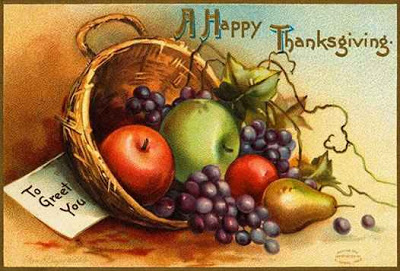
Thanksgiving Day is a national holiday celebrated in Canada and the United States. It was originally celebrated as a day of giving thanks for the blessing of the harvest and of the preceding year. Thanksgiving is celebrated on the second Monday of October in Canada and on the fourth Thursday of November in the United States. Several other places around the world observe similar celebrations. Although Thanksgiving has historical roots in religious and cultural traditions, it has long been celebrated in a secular manner as well.
This is the perfect time of year for everyone around the world to be thankful for what they’ve been given.
- Sit quietly for a few minutes in complete silence. It’s best if you’re alone, and you close your eyes. Remove all problems from your thoughts for a moment. Push everything aside.
Then… think about what you DO have:
- Are you breathing? Yes, you are. Be thankful that you’ve been given LIFE…the biggest miracle of all.
- Do you have loved ones? Be thankful that they are in your life.
- Do you have a roof over your head – even if it’s hard to pay for? Be thankful for that… many people don’t.
- Are you starving? No? Be thankful that you have food to eat. There are millions starving around the world that would love to have some food from your cupboard.
Think for a moment how lucky you are to be alive… even if it’s not always easy.
Sagittarius is the ninth sign of the zodiac. The sun enters Sagittarius at slightly different times each year, usually around Nov 22, sometimes the day before or the day after.
- Symbol: Archer
- Element: Fire
- Gemstone: Amethyst
- Key word: I See
Sagittarians are friendly, open, optimistic people with a positive, enthusiastic approach to life. They are honest and loyal, but have a tendency to be outspoken at times. They are independent people who enjoy having room and space around them. Consequently, they are frequently interested in sports and travel.
From 365 Goddess, we have this for today:
Themes: Creativity; Energy; Communication; Balance; Harmony; Change
Symbols: Bow and Arrow; White Items; Milk; Seawater
Presiding Goddess: Leucothea
In Greek tradition, this woman gave birth to the centaurs and was a wet nurse to Dionysus. Her name translates as “milk-white goddess,” alluding to a strong maternal nature. In later times she became a sea goddess, bearing the visage of a mermaid. Through this transformation we see the mingling of the spiritual nature (water) with that of the earth (half-human appearance) to create Sagittarius’s customary energies.
To Do Today:
In astrology, Sagittarius is the centurion archer who represents a harmonious mingling of physical and spiritual living. Those born under this sign tend toward idealism, upbeat outlooks, and confidence. Like Leucothea, Sagitrarians seem to have a strong drive for justice, especially for those people under their care.
To consume a bit of Leucothea’s maternal nature or invoke her spiritual balance in your life, make sure to include milk or milk products in your diet today. Or, wear something white to figuratively don her power.
For help with personal transformations, especially those that encourage personal comfort and tranquility, soak in a nice long saltwater or milk bath today. As you do, ask Leucothea to show you the right steps to take next.
More About the Sun in Sagittarius:
The Sun is in Sagittarius from November 23 to December 21, depending on the year.
- Ruler: Jupiter
- Season: Fall
- Modality: Mutable
- Metal: Tin
- Stone: Topaz
- Color: Turquoise
- Flowers: Narcissus; Chrysanthemum;
- Anatomy: Hips, Thighs, Muscles
- Attributes: optimistic, restless, enthusiastic, adventurous, honest, irresponsible, outspoken, independent
Restless, cheerful, and friendly, Sun in Sagittarius people are generally on the go. They have a love of freedom, and a disdain for routine. Generally quite easygoing, Sagittarians make friends with people from all walks of life. They love to laugh and tease, and get along well with both sexes.
Sagittarians have an often blind faith in people, and in the world. Their optimism is infectious, although it can get them into trouble from time to time. These are curious people who love to learn. Their idealistic nature is hard to miss.
Although generally easygoing, Sagittarius is a fire sign. This gives natives a generally quick temper. Fortunately, they’re usually as quick to forget what got them angry in the first place.
The need for escape is generally strong, and some Solar Sagittarians come across as a little irresponsible. They’re generally easy to forgive, however. After all, their direct, honest approach in life is admirable.
Source: Cafe Astrology
Eriskegal, great black mother of the House of Dust,
you who wait at the end of every life,
cast your dim black gaze upon the just
and, blinking once, give them rebirth.
While November is the eleventh month on modern calendars, it was once the ninth, as evidenced by the Latin number novem. In the United States, November contains one of the oldest national holidays – Thanksgiving.
Actually, festivals of gratitude combine with late harvest festivals in many parts of the world; at this time people pray for divine providence and give thanks for the earth’s bounty. Other predominant festivals during early winter months include commemorative rites for the dead and rituals that protect individuals or whole communities from evil influences.
For people living in four-season climates, the snows begin to accumulate and winter winds decorate the windows with frosty reminders of the outside chill. Because of this, magic for continued health is fitting during November, as are spells and charms for protection.
Wintery months also seem to be a time for introspection – to us divination tools for foresight and preparation, to seek guidance within, and to ask the Goddess for a special spiritual vision to carry us through the last months of the year.
Source: 365 Goddess
Image from: 2008 Witches Calendar
Stir-up Sunday is an informal term in Anglican churches for the last Sunday before the season of Advent. It gets its name from the beginning of the collect for the day in the Book of Common Prayer, which begins with the words, “Stir up, O Lord, the wills of thy faithful people”. But it has become associated with the custom of making the Christmas puddings on that day.
Why not blend the best of both worlds? Invoke the Goddess Hestia’s blessing in your kitchen and make some pudding for the whole family (or a gathering of friends). Traditionally, families gather together in the kitchen of their homes to mix and steam Christmas pudding on Stir-up Sunday. Parents taught their children how to mix ingredients for the pudding. Everyone took a turn to stir the pudding mix for each person involved is able to make a special wish for the year ahead. Practically, stirring the mixture is hard work, therefore as many as possible are involved.
By tradition the pudding mixture is stirred from East to West in honor of the three wise men who visited the baby Jesus.Have each person present stir the pudding clockwise for a few minutes as they focus on a wish. By next year at this time, the wish should manifest.
It was common practice to include small silver coins in the pudding mixture, which could be kept by the person whose serving included them. The usual choice was a silver threepence or a sixpence. The coin was believed to bring wealth in the coming year. Other tokens are also known to have been included, such as a tiny wishbone (to bring good luck), a silver thimble (for thrift), or an anchor (to symbolise safe harbour).
On a historical note:
The Christmas pudding is one of the essential British Christmas traditions and is said to have been introduced to Britain by Prince Albert, husband of Queen Victoria (the reality is that the meat-less version was introduced from Germany by George I in 1714.). Most recipes for Christmas pudding require it to be cooked well in advance of Christmas and then reheated on Christmas day, so the collect of the day served as a useful reminder.
About Hestia:
The Greek goddess of household affairs, Hestia watches over our cookery today to help manifest family unity and ensure tasty outcomes. As a hearth goddess, she provides the spiritual energy necessary to keep our faith sure and the inner fires burning bright. Greek art did not try to portray this goddess, because she was considered the beginning – the source from which all else was ignited and set in motion.
Light a candle this morning to welcome Hestia’s unity and energy into your home. Or, carry matches in your pocket so the spark of this goddess can ignite in any situation where it’s needed. Throughout the day, when you need more commitment to your beliefs, just light one match to invoke Hestia’s aid.
Collected from various sources
